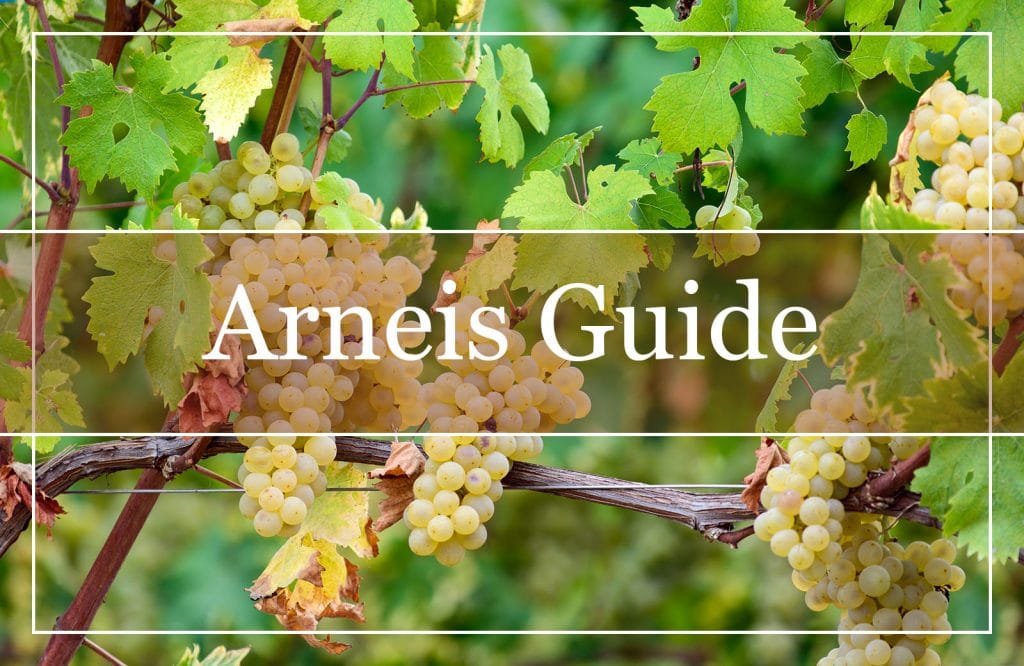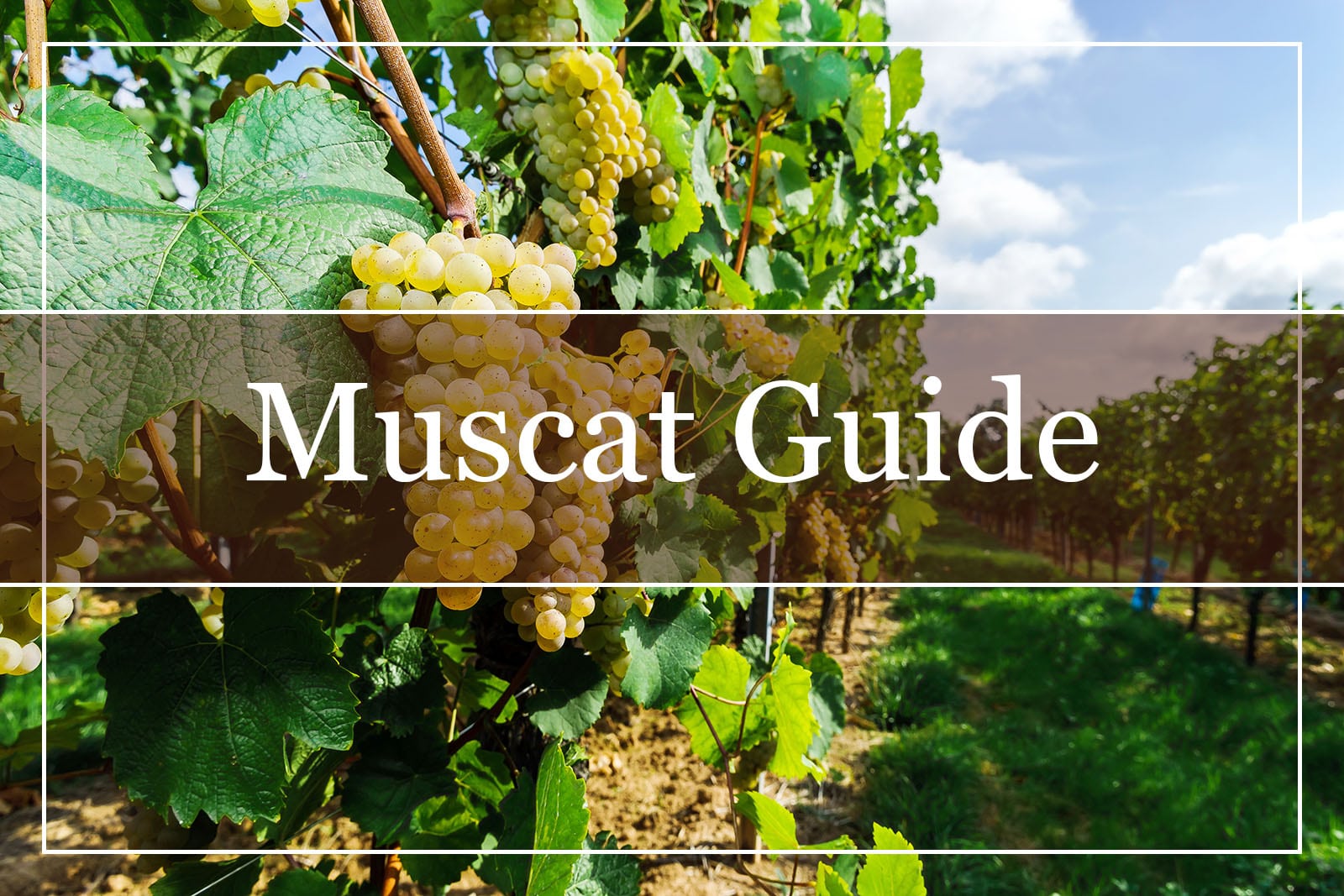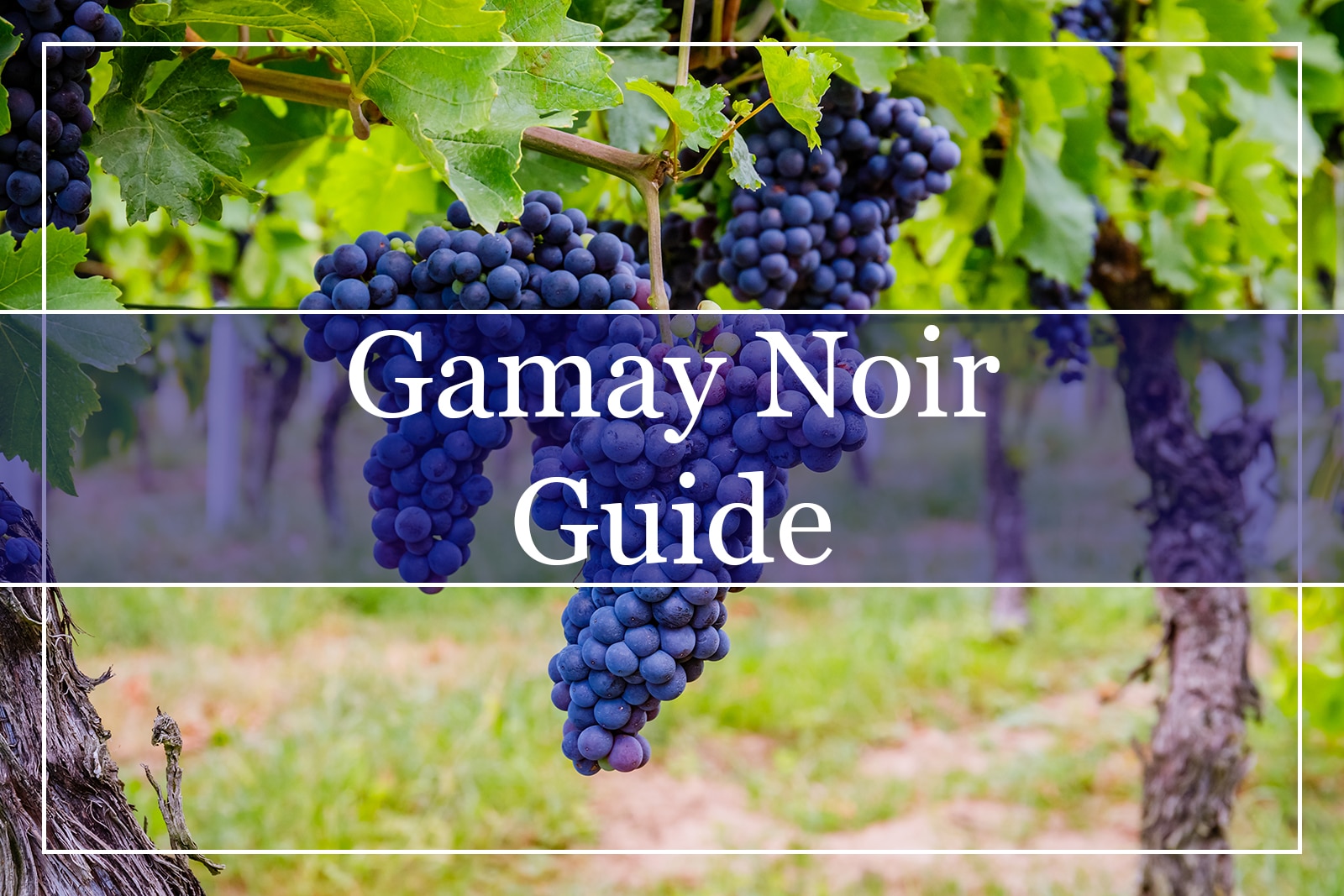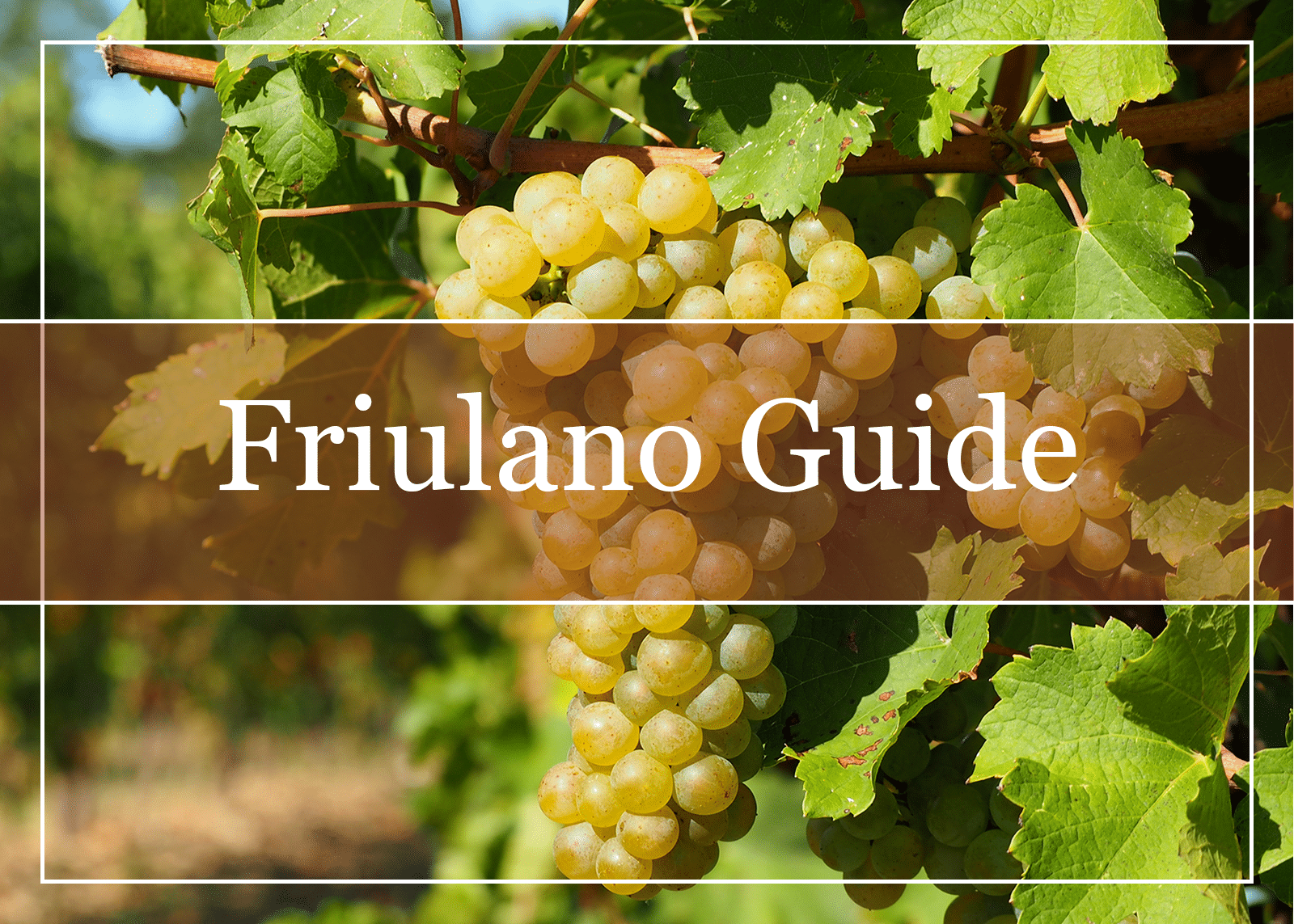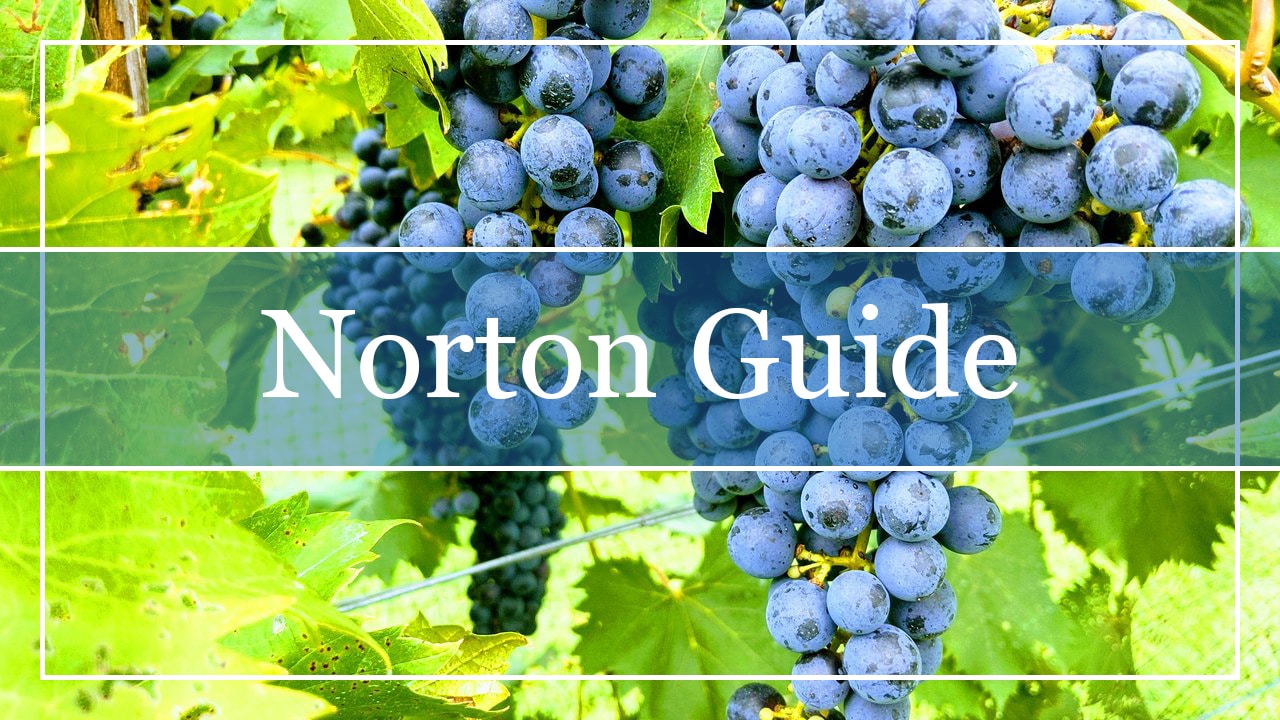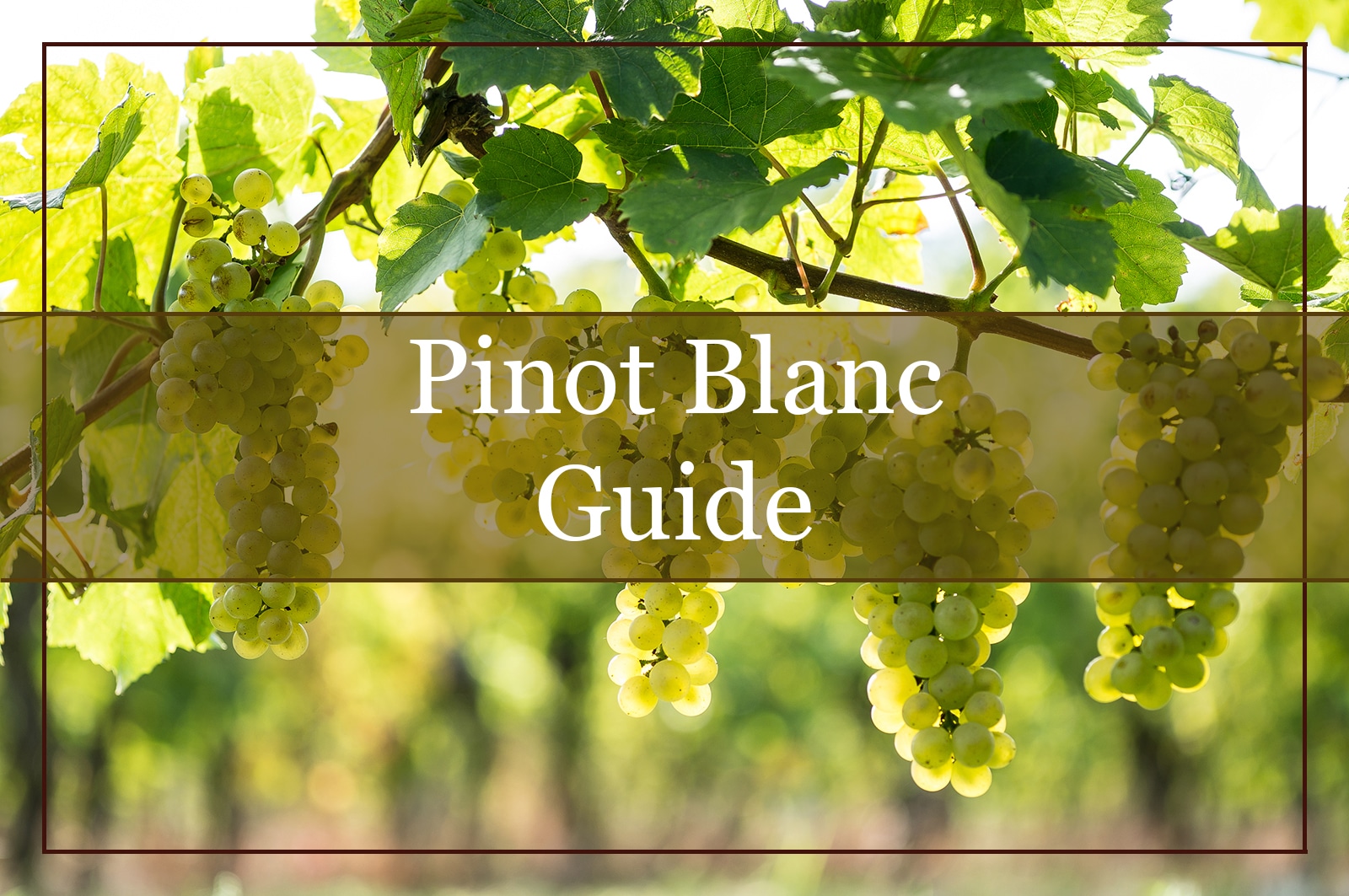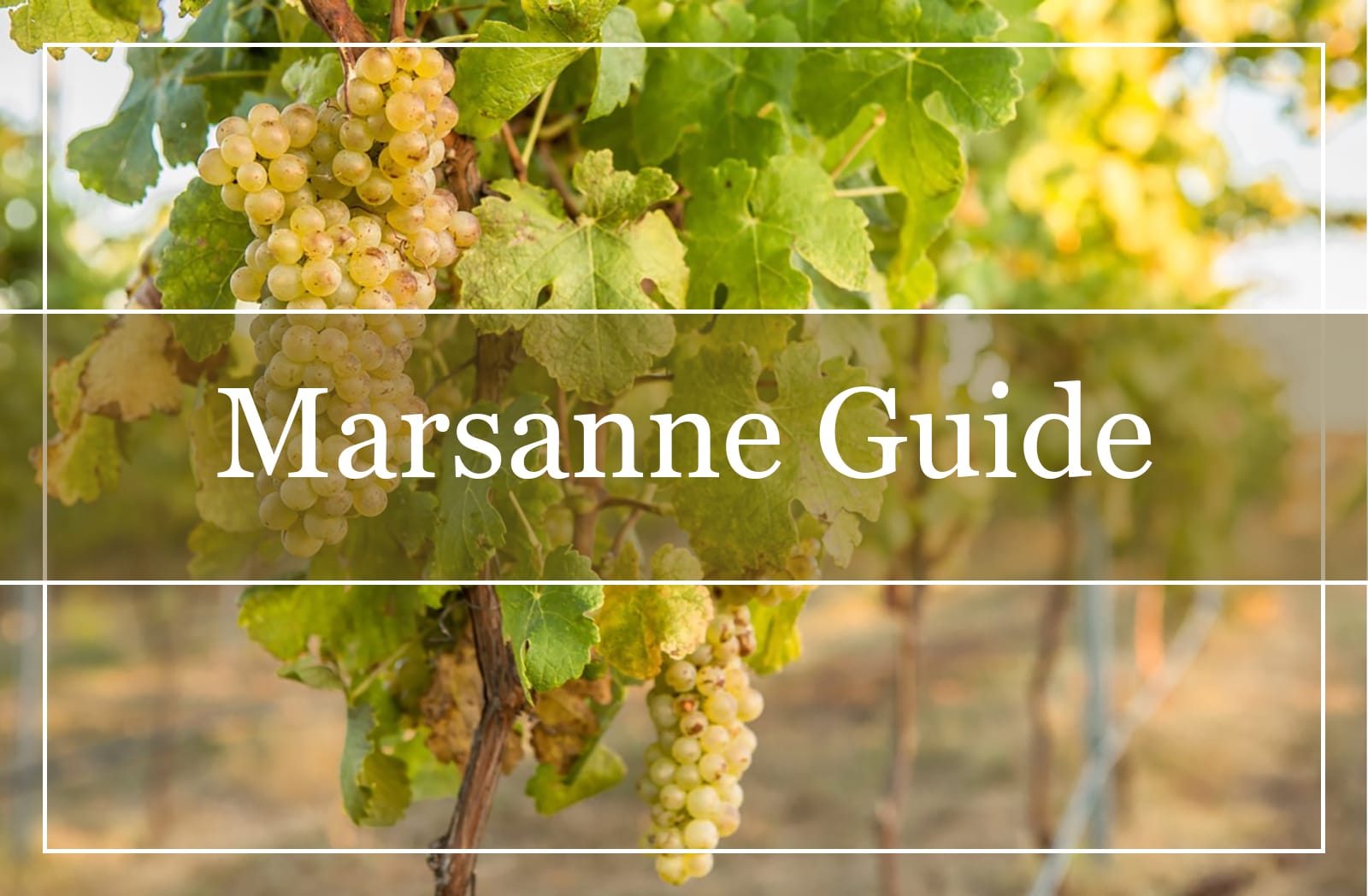What Is Arneis?
Arneis is a local Italian grape variety from Piedmont, a respected wine region. Arneis is similar to Viognier and other renascent varietals, as it almost faced extinction. In recent years, it is enjoying a revival.
By the middle of the 20th century, only a few producers were making wine from Arneis. But now, there are more Arneis vines than ever before in Piedmont, while the grape is cultivated in Australia, New Zealand, and the United States, too.
During the last decades, Arneis produces Roero wines. In fact, it is synonymous with them. These are floral fragrant white wines, with delicate aromas, relatively heavy bodies, and plush tastes of green and stone fruits. There are also apple, pear, and peach flavors rounded out with a creamy almond and hazelnut touch.
As a small note, Arneis is produced across the Tanaro River from Barolo. For this reason, Arneis wines are nicknamed white Barolo (Barolo Blanco). Arneis vines were planted near Nebbiolo vines to form a layer of protection. And, in the winery, Arneis was added in tiny quantities to Barbera or Nebbiolo during fermentation to soften their vigorous tannins.
The characteristics of Arneis emphasize the crispy notes of apple and pear. Arneis wines are fruit-forward with elegant aromas that overshadow the fact that they are medium-to-full-bodied with green and stone fruit flavors and nutty tones. Indeed, Arneis has a rich-tasting profile that shows citrus notes, too. It is an easy-sipper, with high acidity, crispiness, and endlessly floral hints. And it is an emerging hit, as it is similar to Chardonnay and Verdelho.
What Color Is Arneis?
In the vineyard, Arneis is tough to grow. But when it does, it produces fruit with a yellow-greenish hue. Arneis, as most grape varietals, belongs to the Eurasian grape species of Vitis vinifera. Nearly every grape used in winemaking is a family member of Vitis vinifera. Therefore, there are thousands of grape varieties belonging to this species.
Now, up until ‘véraison’ and berry ripening, Arneis grapes are hard and thick to the touch. The ‘véraison’ period, however, signals the point at which the grapes begin to ripen. At this point, the skin changes color, with Arneis color turning golden, developing an intense yellow color.
Between ‘véraison’ and harvest, grapes grow and fill with water. During ripening, sugar levels rise, and acid levels drop. Color pigments and flavor components accumulate. Warm and sunny conditions are ideal, while mild water stress (drought) inhibits soot growth, encouraging grape ripening. It is then that the color exhibits an extraordinary assortment of hues ranging from green and deep yellow to gold with an orange reflection. You need to see it to believe and realize how attractive the appearance is!
What Does Arneis Mean?
Arneis has a fascinating translation related to how challenging a variety it is to grow due to low cropping. In Piemontese, Arneis translates to ‘little rascal’, which is a bit funny. Additionally, the etymology of Arneis appears to derive from Renexij, the ancient name of the locality Renesio di Canale, which morphed first into Arnesio and then into Arneis.
But as we delve deeper into the history of Italian viticulture, Arneis seems to be a dialectal inflection of the Italian ‘arnese’. In turn, ‘arnese’ derives from the Germanic ‘hernest’, the same word that gives us ‘harness’ in English. Consequently, it is possible that the original meaning of Arneis had the sense of furniture, gear, or equipment, which is unrelated to wine production.
How to Pronounce Arneis?
The Arneis pronunciation is not hard even for non-native Italian speakers. But it is essential to learn to pronounce the name of this varietal correctly, as, by doing so, you prove your wine knowledge. There are many helpful audio and video examples online on how to pronounce its name. Arneis is composed of two syllables, and the emphasis falls on the second syllable. Here what it looks like phonetically:
arh-nase
Where Does Arneis Come From?
Arneis comes from the prestigious Piedmont region in Northwestern Italy. There, it is associated with the famous Roero white wines. As mentioned before, Roero is across the river from Barolo, meaning that Arneis is nicknamed white Barolo (Barolo Blanco).
The grape has been cultivated in the Roero since the fifteenth century. At that time, it was synonymous with Moscato. Over the years, it has been vinified in purity or transformed into Vermouth as an aromatically intense fortified wine flavored with botanicals. But since it grows with difficulty and gives poor yields, Arneis became almost extinct in the 20th century. Wine-growers uprooted it in favor of the easier to cultivate Chardonnay vines.
During the 1970s, however, there was a change of direction, and Arneis came back on track. A winemaker of the Roero was responsible for this, as he believed in the wine and its powerful aromatic qualities. The late Alfred Currado devoted time and effort to bring the then-endangered varietal back from the edge of extinction. His work with Arneis sparked a renewed international interest in Piedmont wines, too.
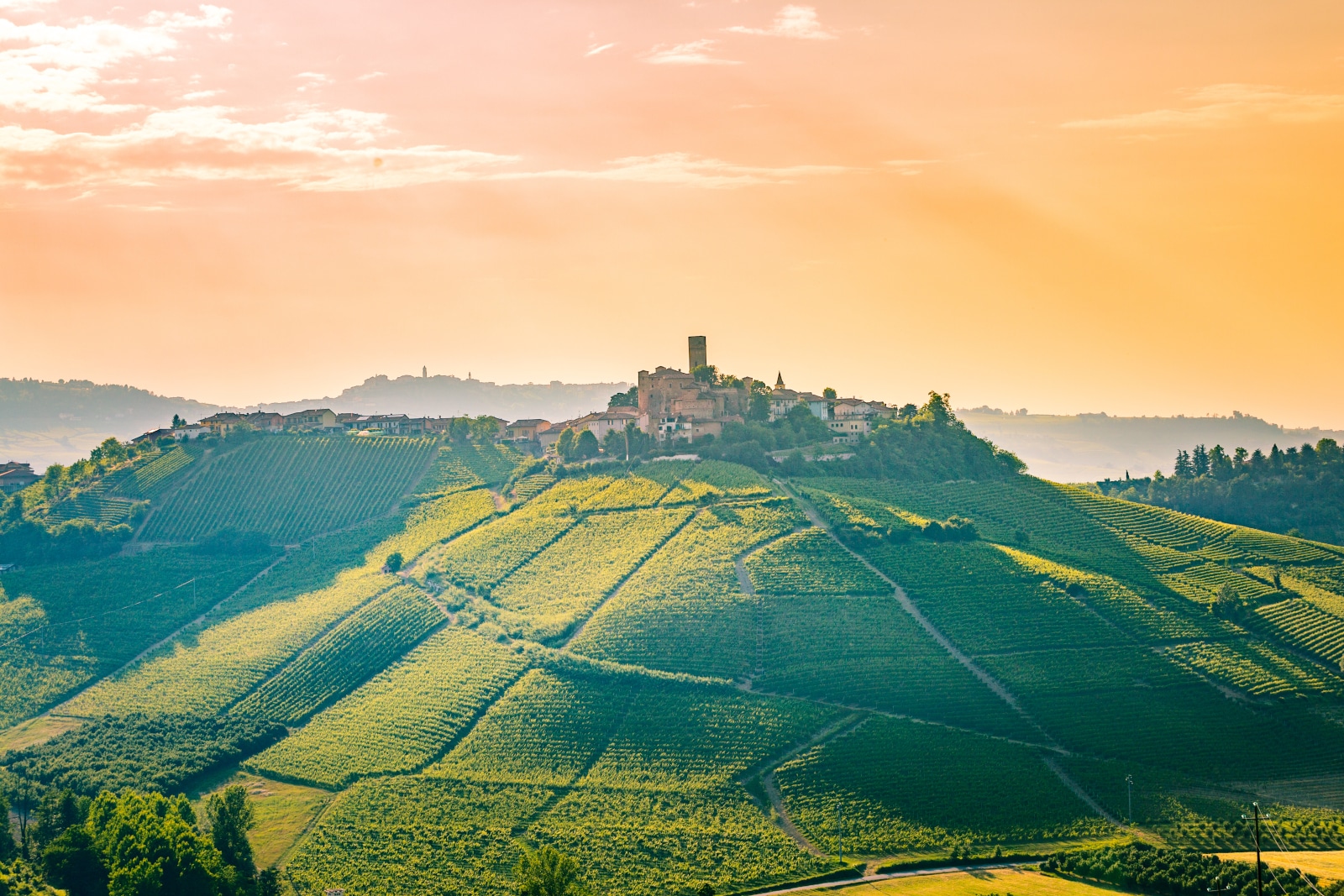
Arneis Outside Italy
Piedmont is a hilly and cool area. Therefore, it makes sense that Arneis finds success in Australia as well. There it grows in cool regions with rolling hills, similar to Piedmont, such as Adelaide Hills, King Valley, Yarra Valley, and Mornington Peninsula in South Australia. In addition, Arneis is also cultivated in the Southern Highlands in New South Wales.
By being planted in cool climate regions, Arneis attains a perfect balance between fruitiness and acidity. In warmer areas, though, Arneis has a richer tasting profile with considerably low acid levels.
Apart from Italy and Australia, wineries in California and Oregon are trying to produce Arneis and have seen relative success. However, they cannot craft the same quality of Arneis wines as in Piedmont because of the climatic conditions. The climate in California and the surrounding States are warm and hot, which is against the nature of Arneis, a varietal seeking cool temperatures that do not fluctuate.
What Kind of Wine Is Arneis?
Arneis is produced as a crispy, medium-to-full-bodied white wine with recognizable character and crystalline elegance. It is versatile and matches a wide variety of Mediterranean and North African courses. It is perfect for almost any occasion, especially pleasant poolside, at a picnic, or with a couple of friends on the patio. When served extra chilled, Arneis is super delicious, dynamic, and invigorates. Guests are sure to welcome it.
Is Arneis Dry or Sweet?
Arneis wines are dry, but sometimes they tend to feel slightly off-dry, too. That said, so much about the flavors of a wine depends on the winemaker’s skill and vineyard position. For example, to produce a dynamic Arneis wine, the vines should be planted in chalk and clay-based soils and at a minimum altitude of 250 meters above sea level, to spur high acidity levels. Likewise, Arneis vines cultivated in hot regions such as California will show overripe fruit flavors and juicy aromas, sacrificing aromatic elegance for plush and luscious scents.
What Does Arneis Taste Like?
Arneis tasting notes highlight the freshness and the crispiness of the flavors. If you are into fruity wines with distinctive Italian finesse, then Arneis might be the best wine option for you.
The Arneis aroma shows fruitiness, such as green apple, lemon, lime, orange peel, and bergamot. Also, sweet-smelling flower fragrances of honeysuckle and lavender contribute to aromatic elegance. Hints of almonds are present, too, while mineral notes add depth.
On the palate, Arneis flavor profile has rhythm and slight saltiness, without being overwhelming or too aggressive. Flavors of pear and stone fruit dominate, while hazelnut tones and blend with elements of flint and wet pebbles. The high acidity invigorates and is a characteristic component of the wine’s personality. Consequently, a sip of Arneis is like a refreshing drizzle during a warm summery day. It has liveliness and pleasantness. It breathes life.
How to Serve Arneis?
As with most white wines, Arneis is best served in regular medium-sized white wine glasses. At the same time, though, take extra care to taste the wine as vibrant, vivid, and young as possible to maintain its crispy and tangy flavors. The wine speaks for itself without needing external help. But do strive to serve it cold.
Arneis should be presented chilled to guests. The perfect temperature to serve Arneis is 40-45°F (7-10°C). In this way, the wine’s flavors are enhanced and stimulate. Perfect for hot days, decanting is not an option and should be avoided. It will not help the wine deliver additional aromas and flavors or change the flavor profile dramatically in any way.
To keep Arneis fresh, you must ensure that it stays cool during serving. To do this, use an ice bucket or wine cooler. The bucket should be filled three-quarters full with equal quantities of ice and water so that iced water surrounds the bottle. Then, the water can transfer the heat from the bottle to melt the ice. Air acts as an insulator, and the bottle chills. That said, be careful and do not over-chill the wine, as Arneis might become thin, resulting in a dull wine and an uninspiring wine-drinking experience.
A Drink Now White Wine
Arneis is not designed for long-term storage. Theoretically, it can bottle age for up to two years if stored in a stable environment with temperatures that do not fluctuate and a portion of humidity. But it is unlikely it will develop deep tertiary flavors or increase its structure by much.
How Long Should Arneis Breathe?
Since Arneis is a crispy medium-to-full-bodied white wine, giving it time to aerate is not that necessary. Decanting an Arneis wine, consequently, can be avoided. Some air, though, might help it to revitalize some of the secondary flavors and aromas, such as nut touches and hints of baking spices, so, if you fancy, give Arneis a maximum of ten minutes to breathe before serving.
What Food to Pair With Arneis?
Arneis food pairing is straightforward and simple because this wine pairs with several types of food. In other words, it has a food-friendly profile. Creamy pasta, such as spaghetti carbonara, roast chicken, turkey, or lean non-fat fish, like sea bass or perch, makes fantastic companions to Arneis. On that note, do also try the wine with shellfish, like grilled shrimp or oysters, for extra pleasure. In addition, Arneis complements fresh herbs like tarragon and parsley well, so be sure to use them while cooking.
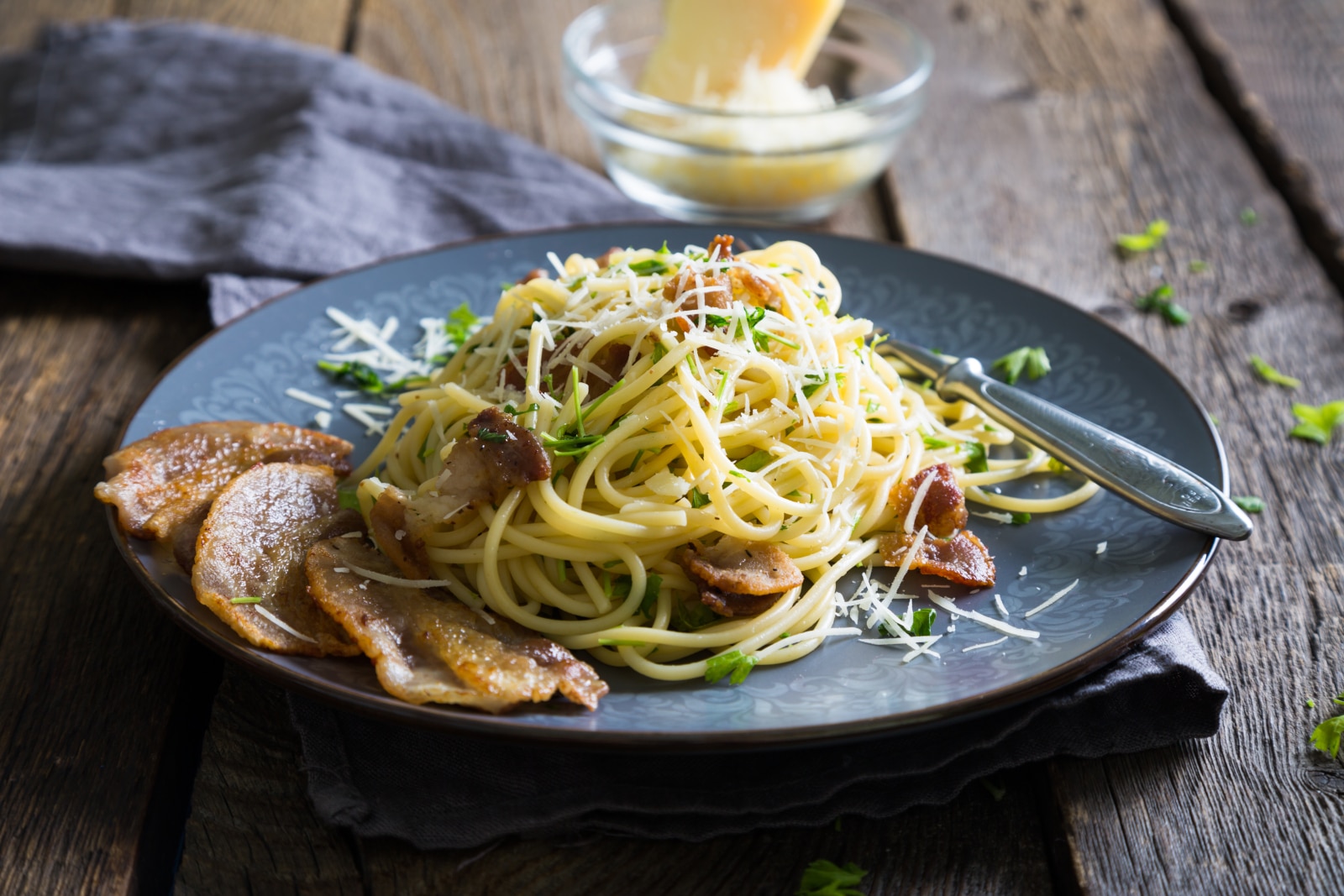
Arneis Cheese Pairing
If you have to try Arneis together with cheese, do it like the Italians, and match the wine with Caciocavallo, a stretched-curd cheese made out of cow’s or sheep’s milk from Southern Italy. It may be challenging locating the cheese if you are not living in Italy. In that case, pair the wine with Mozzarella, Brie, Provolone, Swiss, Pecorino Romano, or Gorgonzola. Instead of serving them on a cheeseboard, though, use them as part of dishes such as pizza or pasta, as Arneis goes delightfully with light cream sauces.
How Much Alcohol Does Arneis Have?
Arneis has an alcohol content is in the range of 11.5 to 13% ABV. That is the typical alcohol concentration of medium-to-full-bodied dry white wines. Before purchasing a bottle of Arneis, though, double-check the label to be more precise. Remember also to enjoy the wine responsibly, avoiding excessive consumption.
How Many Calories Are There in Arneis?
What increases calories in wines, and liquors in general, is alcohol and residual sugar. Even a dry white wine like Arneis may have relatively high sugar levels. And in fact, it does. Some Arneis wines are off-dry with a higher sugar concentration than the bone-dry ones. The carbs in Arneis are in the range of 1 to 7 grams per glass, while the calories are 22 to 27.
Conclusion
Arneis is a unique white grape variety originating in the Piedmont region in Northern Italy. It is made as a single-varietal, and it is tough to grow. Despite this, when winemakers take the time and effort to cultivate Arneis, they produce a crispy wine with flavors of green and stone fruits and an uplifting minerality. High acidity is also a characteristic of this varietal, as the chalky tannins add to the wine an elevated freshness.
With a texture similar to a Sauvignon Blanc and a flavor profile equal to a Chardonnay, Arneis hits the right spot between freshness, savoriness, and elegance. If given care and attention, it has the chance to develop through barrel-fermentation from a zesty wine with a fruit-driven style to an exceptional wine packed with plush peach notes and an oaky depth.

